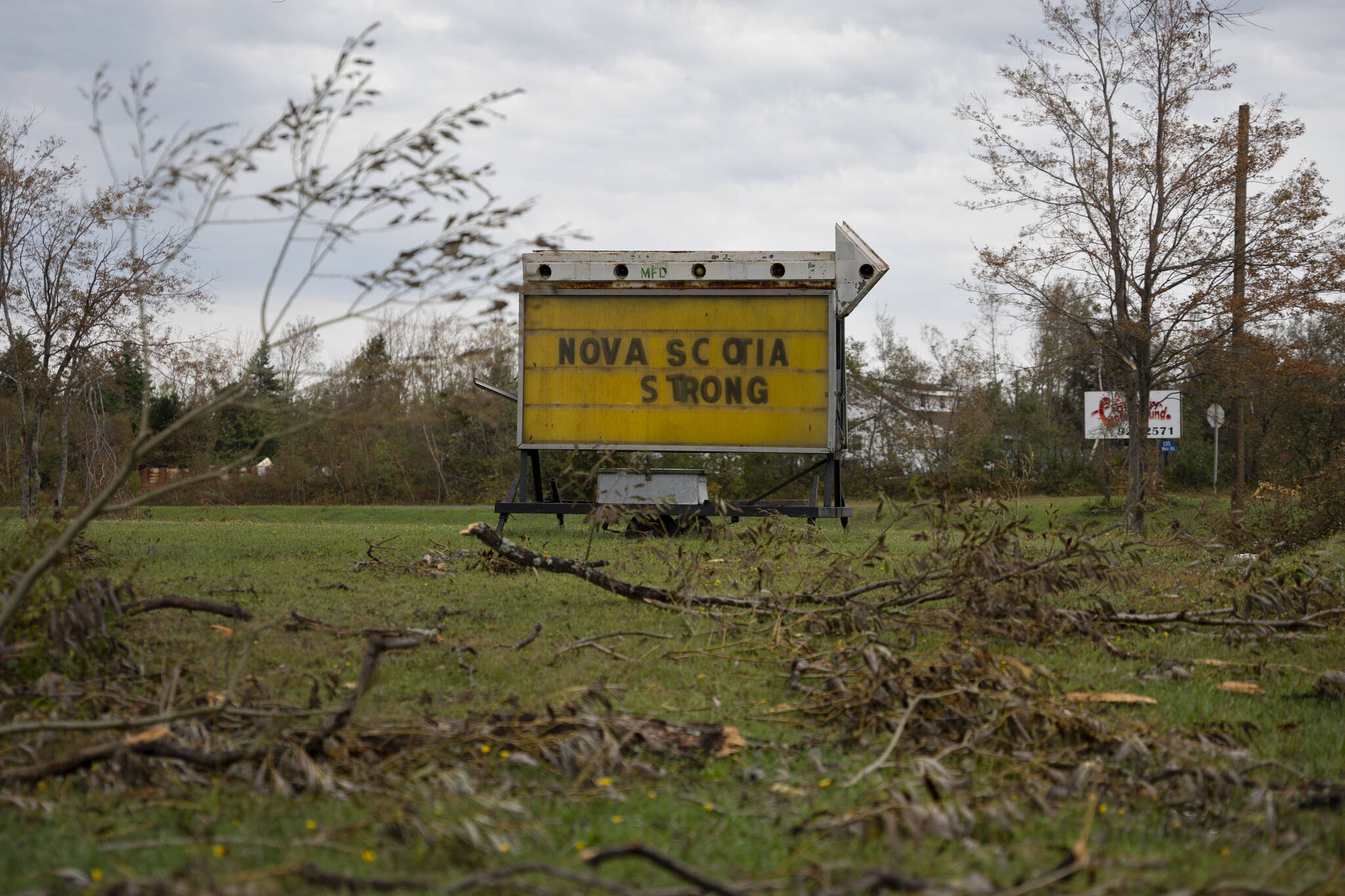Defence Minister Anita Anand says there are now 700 military members in Atlantic Canada helping with the cleanup after post-tropical storm Fiona left much of the region in tatters.
Anand said Thursday that Canadian Armed Forces members in Nova Scotia, P.E.I. and southwestern Newfoundland are helping to clear debris, reopen roads, check on residents and assess damage. Additional troops are on standby, along with some ships and aircraft, the minister added.
Federal Fisheries Minister Joyce Murray said 180 of the region’s 706 small-craft harbours were in the path of the storm, adding that work is underway to determine the extent of the damage. Murray said the department knows of at least 99 harbours that are partially operational and five that are so damaged they are no longer functional.
As well, work is underway in many harbours to remove dozens of sunken or grounded vessels.
“This is going to be a very costly venture,” Newfoundland MP Gudie Hutchings told a ministers briefing Thursday. “And we need to build back safer, stronger and better for our fishermen, for our farmers, for our communities and, most importantly, for our residents.”
Hutchings represents the area that includes Port aux Basques, N.L., where Fiona destroyed more than 70 homes, some of which were dragged out to sea by a record-breaking storm surge on Saturday morning. The storm claimed the life of a 73-year-old woman, who was swept out to sea when a wave flooded her home and tore apart her basement.
In Charlottetown, some streets remained closed Thursday because of hazardous debris, fallen power lines and damaged trees. Island residents were again asked to limit travel to essential trips. As well, 13 parks and playgrounds have been identified as unsafe. The city also had plans Thursday to offer 400 free hot meals to residents at the University of Prince Edward Island.
On the north shore of P.E.I., about 50 kilometres northwest of Charlottetown, photos of the century-old Cape Tryon lighthouse show that its roof and lantern room were sheared off by the storm. Local photographer Bruce Stewart said he hopes the lighthouse will be repaired quickly because the structure will see more damage if it is left open to the elements.
In Nova Scotia, the provincial government has launched a new website where residents can apply for financial assistance.
Under a new program, any household that lost power for at least 48 hours can apply to receive $100 to help cover the cost of spoiled food. As well, up to $250 is available for those who have to pay for tree removal, and $1,000 per household is being offered to people who were either ordered out of their homes or cannot return to their residences.
As of Monday, Nova Scotia started accepting applications under a disaster financial assistance program, which covers up to $200,000 in uninsurable losses per household, small business and not-for-profit organization.
New Brunswick has unveiled a similar disaster financial assistance program. “We expect hurricane Fiona’s damage total will exceed the $35 million paid out for hurricane Dorian in 2019,” Public Safety Minister Bill Hogan said in a statement released late Wednesday.
As of Wednesday, the New Brunswick government had received 164 damage reports, most of them from an area extending from the Nova Scotia boundary, along the Northumberland Strait to the Acadian Peninsula. Up to $200,000 is available to households applying to cover the cost of uninsured structural repairs.
“If affordable (insurance) coverage was available and not purchased, a disaster financial assistance claim cannot be approved,” the New Brunswick government said in a statement.
Residents can also file claims to cover the costs of such things as appliances that could not be removed from flood danger, labour to clear material from basements, and the removal of trees that pose a threat to safety.
RELATED: Trudeau visits N.L. town devastated by Fiona, says Ottawa ‘will be there’ to help
VIDEO: Fiona leaves a trail of economic devastation in its wake

